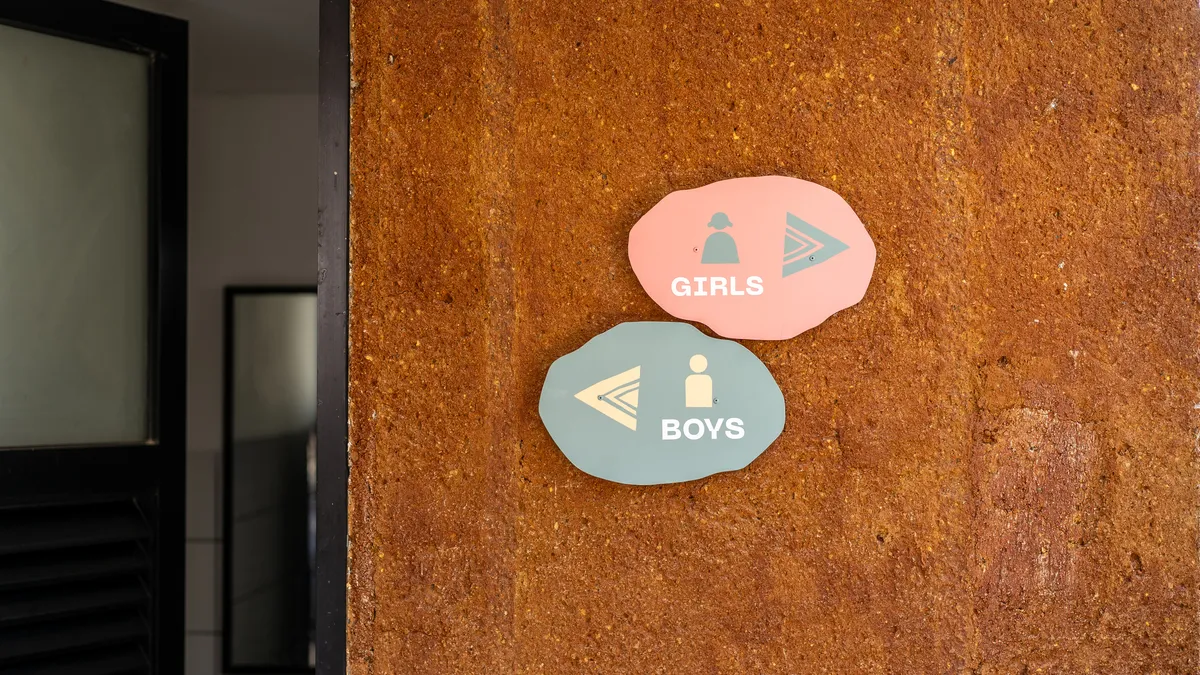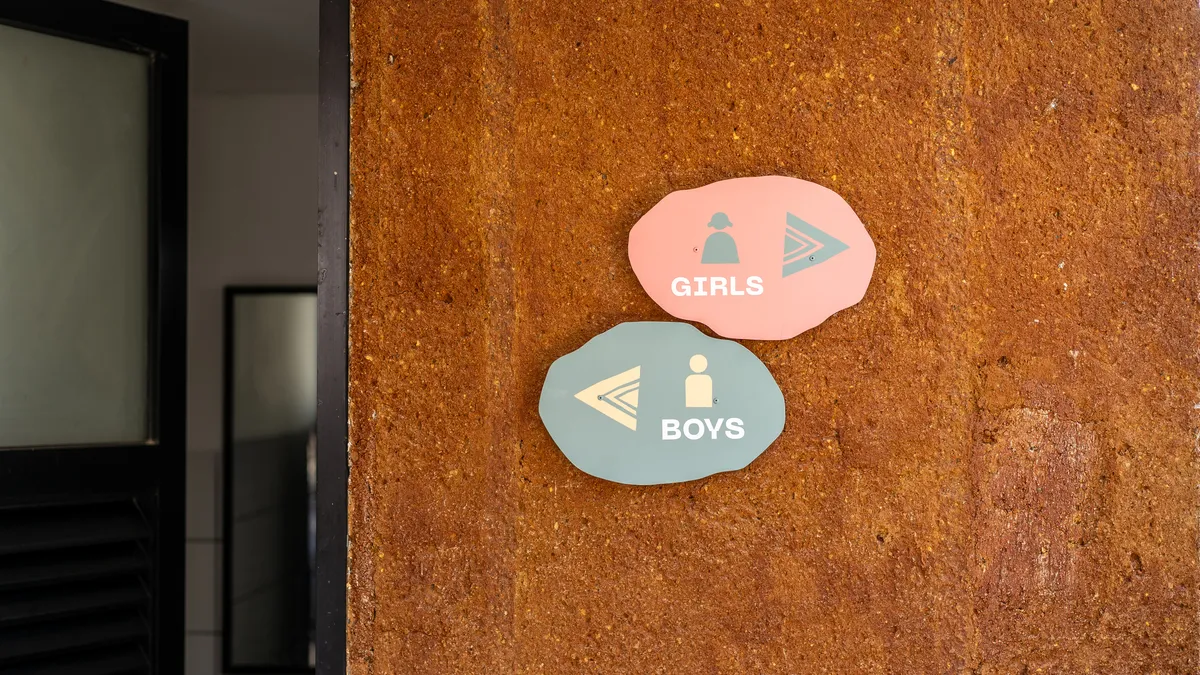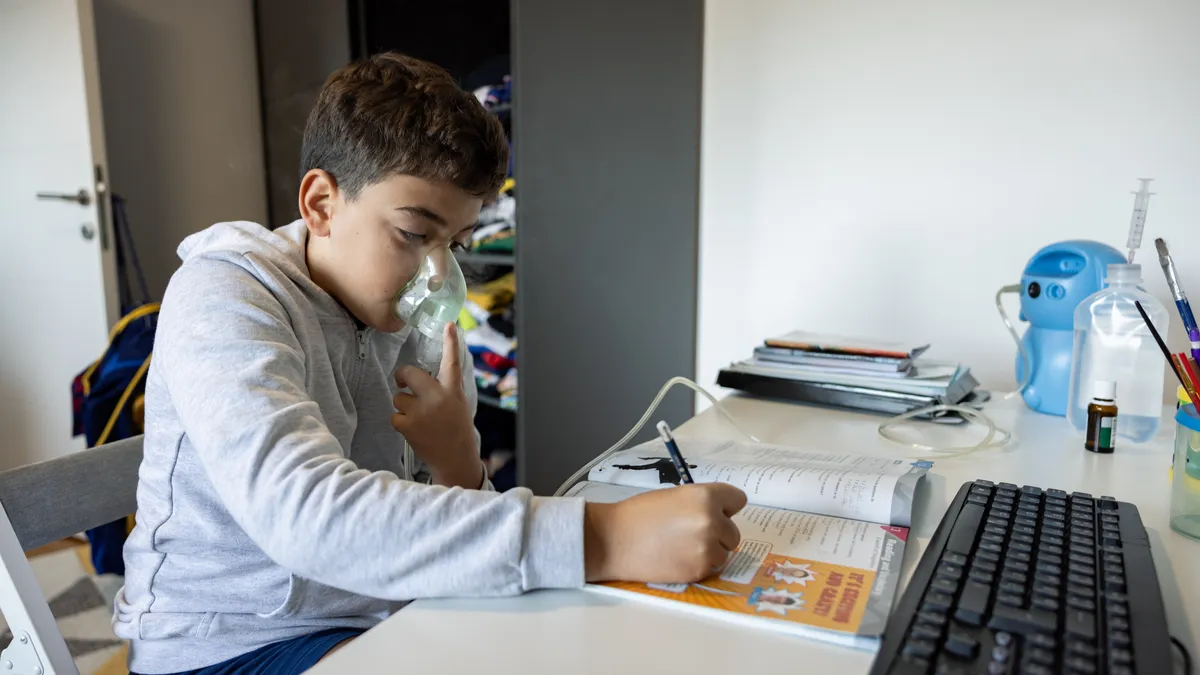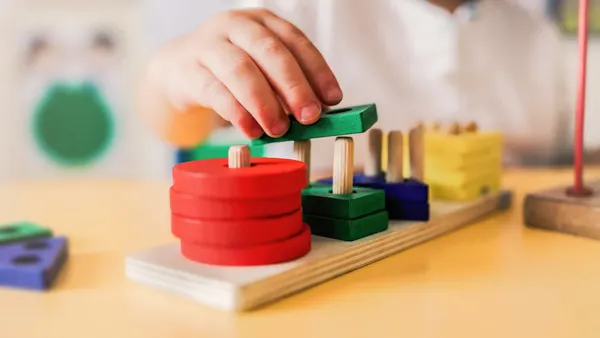This is the latest installment of Study Hall, an occasional series that serves as a one-stop shop for must-know information on critical topics impacting schools. For previous installments, click here.
The Individuals with Disabilities Education Act — signed into law 50 years ago this November — guarantees a free, appropriate public education (FAPE) to students with disabilities. The law requires schools to provide individualized learning supports to students, as well as related services like physical or speech therapy.
IDEA also helps states operate early intervention programs for infants and toddlers with disabilities and their families.
Both the early intervention program for infants and toddlers with disabilities — known as IDEA Part C — and the school-aged program for students with disabilities — known as IDEA Part B — work in conjunction with state-level special education policies.
Many consider IDEA not just an education law, but also a civil rights law that provides due process protections for students and families. Here’s what is critical for school districts and their educators to be aware of in their responsibilities for serving students with disabilities.
Who qualifies for services?
Two factors must be met to qualify for IDEA services for children and young adults ages 3-21. First, a student must have a disability that's included under one or more of the 13 disability categories in IDEA. Although there are only 13 categories for school-aged children, some can include a broad range of challenges faced by students.
The second factor is that the student's disability must be impeding their ability to make educational progress.
Parents can ask a school to evaluate their child to see if they qualify for IDEA services. Additionally, schools must conduct an initial evaluation if they think a student may qualify for services. If the student does qualify, a team of educators, administrators, related service providers and the student's parents or caregivers — known as the student's individualized education program team — will meet to determine the types of services or related services needed, the frequency of those interventions and goals for the student's progress
School districts are also responsible for identifying and evaluating students with disabilities attending private schools within the district's boundaries.
Parentally placed private school students are not entitled to FAPE under IDEA. However, districts are required to dedicate a proportionate share of IDEA Part B funds for services to parentally placed private school students with disabilities, according to February 2022 guidance from the U.S. Department of Education. This means, for students ages 3-21, a district must calculate a portion of its IDEA Part B funds for services for the number of students with disabilities enrolled and parentally placed in private schools.
For children birth through age 2, IDEA eligibility is determined by each state. For example, some states offer automatic eligibility for infants who are born with low birth weights or neonatal abstinence syndrome.
How do students receive services?
Schools need to make sure the IEP services are carried out as written while ensuring each of the student's teachers is familiar with the goals, accommodations, modifications and supports included in the IEP.
These services can take place in a general education classroom, in a special education-only classroom, in specialty classes like physical education or art classes, on the playground and the bus, or anywhere else that is detailed in the IEP.
Some students with disabilities will qualify for extended school year services, meaning they’re eligible for special education services before or after school or over the summer.
A student's progress is monitored and reported to their parents. The IEP is reviewed at least yearly, and at these IEP meetings, parents and educators can suggest changes. Students who qualify for IDEA services are reevaluated at least once every three years.
Infants and toddlers with disabilities receive early intervention services at their home or other locations most familiar to the child, in collaboration with the child's parents. A child's individualized family service plan outlines the supports they need for their development.
Who pays for the services?
School systems pay for all special education evaluations and services through funding from a variety of local, state and federal sources. Schools can also seek reimbursement from Medicaid for some services in a student's IEP.
For fiscal year 2020, districts spent $38.8 billion for special education, or about $13,127 per each IDEA-eligible student, according to a 2024 analysis by Bellwether.
The organization also found that state-level spending for special education varied greatly, from an average of $24,443 per pupil in Connecticut to $5,265 in Mississippi.
The federal contribution for IDEA this fiscal year is $15.5 billion.
How many young children and students qualify for IDEA services?
The number of young children and students who qualify for individualized services under IDEA has been increasing in recent years, worrying educators who say a shortage of special education teachers and funding gaps are stressing the system.
From fall 2022 to fall 2023, the number of IDEA-eligible students ages 3-21 rose 3.4% to a total of 7,892,433, according to an analysis by The Advocacy Institute, a nonprofit focused on improving the lives of people with disabilities.
The number of infants and toddlers served under IDEA, Part C jumped 4.8% from fall 2022 to fall 2023 for a total of 462,847 youngsters.
What happens if there are disagreements?
When parents and educators disagree about services in a student's IEP, the first step is to try to resolve the dispute through the IEP team process. If that is not successful, parents or educators can pursue these options, according to the Center for Appropriate Dispute Resolution in Special Education:
- Case manager or family support coordinators. This person can help facilitate school-parent communications and assist in clarifying requirements under state and federal special education rules.
- Mediation. The parents and educators agree to work with a third-party mediator to help resolve their differences.
- Due process complaint. Parents and school systems can file a due process complaint about their grievances regarding a student's IEP and services. An impartial hearing officer is assigned to review the case and hear testimony. This process typically requires attorneys to be involved, which can be costly for schools and parents.
- Resolution meetings. These are opportunities for schools and parents to work out issues raised in the due process complaint and can result in an agreement that negates the need for a due process hearing.
- Written state complaint. Parents and anyone from the public can file a written state complaint with the state education agency, which then will investigate to determine if a school or district violated IDEA.
- Office for Civil Rights complaint. Anyone can file an OCR complaint with the U.S. Education Department. For issues related to students with disabilities, most complaints center on claims of disability discrimination under Section 504 of the Rehabilitation Act and Title II of the Americans with Disabilities Act.
Will there be another IDEA reauthorization?
The last major reauthorization, or update, of IDEA by Congress was more than 20 years ago — in 2004. There does not seem to be momentum to begin a reauthorization process currently, given that the process would mean each section of the law would be up for debate and negotiation by lawmakers.
And many advocates and education organizations said they prefer IDEA is reauthorized holistically rather than amended by piecemeal. Instead of a reauthorization, they say they want Congress to "fully fund" IDEA at 40% of the additional per-pupil cost for special education services. Currently, it's at about 10%, or around $1,810 per student.

















